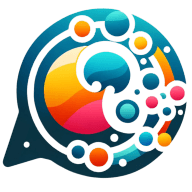11 Overcoming CRM Challenges in Relationship Management
Successful relationship management requires overcoming common CRM challenges that many organizations face today. This article explores practical solutions from industry experts who have implemented effective strategies across various business contexts. The insights provided address key issues from balancing automation with human connection to transforming static data into actionable intelligence.
Balance Automation with Human Connection
The biggest challenge I've faced with CRMs is balancing automation with authenticity. It's tempting to over-engineer every interaction. You set up endless tags, triggers, and follow-up sequences only to find that sometimes simple is better. Sometimes, elaborate workflows are impressive on paper but feel impersonal in practice. If you have this problem, rebuild from the ground up. Consider the human perspective. Write fewer emails, but give them a clear purpose and a personal touch. My experience with CRM taught me that technology should amplify relationships, not replace them. A CRM is most valuable when it's a memory aid for empathy, not just a machine for conversion.

Forcing Consistent Usage Through Automation
The most challenging part of CRMs is the same as we see challenges running those treadmills. People just buy them, and then they just don't actually use them. Or worse, they use them badly, half-baked notes, missing data, duplicate records everywhere, like some kind of digital hoarder's garage.
How did I "overcome" it? By force. Unfortunately, by creating strict rules and automations, people couldn't screw it up even if they tried. Required fields, data validation, and automated reminders. Basically, babysitting software for adults who are paid a salary.
What did I learn? Those tools don't magically fix human behaviour. A CRM is just a glorified spreadsheet in a suit, and if the people feeding it are lazy or inconsistent, the whole thing collapses like a badly made souffle. The lesson is to just not trust people, trust the process and then automate the process because people will break that too.

Build Tools for Your Specific Industry
The biggest challenge I faced with traditional CRMs was that they weren't built for the franchise world—they were built for general sales teams. When I was working with franchise teams, I kept running into the same problem: the system couldn't track what actually mattered to franchisors—things like compliance timelines, territory mapping, or openings and closures tied to Item 20 data. We were constantly forcing tools to do jobs they weren't designed for, and the result was chaos—duplicate records, missed deadlines, and endless spreadsheets trying to fill the gaps.
That frustration is what led me to create Zors, a niche CRM built specifically for franchisors. Instead of trying to adapt to a generic system, we designed one that understood the process—awarding territories, managing compliance, and tracking unit performance.
The lesson I learned was simple but powerful: sometimes the problem isn't how you're using the tool—the problem is the tool itself. Once you have a software that fits your industry's actual workflows, everything becomes easier. Data gets cleaner, teams align better, and your CRM finally becomes what it should've been all along: a growth engine, not an obstacle.

Create Buffer Layers Between Systems
The main difficulty arose from merging a third-party CRM system with our internal legacy system which lacked external data exposure capabilities. The system experienced irregular data synchronization while we encountered recurring API throttling restrictions and race conditions.
The solution involved creating a buffered integration layer through a lightweight .NET Core service that used RabbitMQ as its message queue. The service managed automatic retries together with data batching and rate control functions. The solution enhanced system reliability while demonstrating that CRM integrations with legacy systems need an intermediate abstraction layer to prevent future complexity and save development time.

Simplify Technology for Trades Workers
My biggest challenge with "customer relationship management" was trying to force the crew to use the software. We bought a big, expensive CRM system that was supposed to track every lead and every client interaction. It was a corporate solution to a hands-on problem, and it was a complete failure.
The guys on the roof don't want to mess with data entry; they want to be securing flashing and managing materials. The CRM was complicated, the interface wasn't built for a dusty job site, and the data they were entering was unreliable because they were rushing through it. The challenge wasn't the software; it was the unrealistic expectation that a craftsman should also be an admin clerk.
I overcame it by throwing out the corporate idea and finding a simple, hands-on solution. We didn't get rid of the CRM entirely, but we stripped it down to just a few essential fields. More importantly, we hired a dedicated, part-time admin person whose only job was to be the human interface. Every evening, the foremen would give her a quick, five-minute voice memo on the day's status, and she would enter the data. She managed the paperwork so they could manage the roof.
The lesson I learned is that technology doesn't replace the human element; it should support the people who are actually doing the work. You can't expect a craftsman to stop being a craftsman to enter data. The best way to manage customer relationships is to be a person who is committed to a simple, hands-on solution that keeps your best people focused on their trade.
Design Around Actual Workflow Patterns
Our biggest challenge wasn't learning the CRM, it was getting people to actually use it. Every team had their own version of "what matters," so the system became a data graveyard.
We solved that by rebuilding our process inside Zoho CRM and customizing it around how our sales and project teams actually worked, not how the software was "supposed" to work. We automated follow-ups, added Slack alerts for deal updates, and created a clean pipeline view everyone could trust. Adoption shot up once people saw fewer missed leads and faster handoffs. That experience taught us a simple truth we now apply when implementing Zoho for clients: a CRM only works when it feels invisible, like a part of your daily rhythm, not another task on your list.

Maintain Data Quality Through Regular Audits
One of the biggest challenges we ran into with our CRM was dealing with too much information instead of too little. As our customer base grew, the system became cluttered with outdated contacts, duplicate records, and incomplete notes. It slowed everything down, making it harder to find what we actually needed. It taught us that more data isn't always better if it's not managed well.
To fix it, we set up a monthly data audit and assigned one team member to review and clean up records regularly. We also created clear guidelines for how and when to log updates, ensuring everyone entered information consistently. Once we streamlined the data, our response time improved, and our follow-ups became more accurate. The biggest takeaway was that a CRM isn't just a database — it's a living system that needs regular maintenance to stay useful.

Reframe Technology as Storytelling Tool
One unexpected challenge we ran into with our CRM wasn't the software—it was human nature. The system tracked everything so well that it started to feel like "big brother" to some of the team. A few technicians hesitated to log details because they worried it would be used to micromanage them. Productivity dipped, not because the CRM failed, but because trust did.
We reframed the CRM as a storytelling tool instead of a monitoring tool to improve its effectiveness. We showed how those notes and updates built the narrative of each customer's experience—how it helped future techs pick up where someone left off and made clients feel genuinely remembered. That small shift changed everything. The data remained unchanged, but the mindset shifted from compliance to collaboration. The big takeaway: technology only works when people see themselves in its purpose.

Standardize Data Across Multiple Departments
The most significant challenge was maintaining accurate and up-to-date patient and client data across multiple departments. In healthcare supply and service operations, even a small discrepancy—such as a mismatched contact record or outdated purchasing history—can delay critical shipments or complicate service scheduling. Initially, fragmented data entry across platforms created inconsistencies that made it difficult to deliver a seamless customer experience.
To resolve this, we standardized data input protocols and integrated our CRM with our inventory and billing systems. Every department now works from a unified dashboard that reflects real-time updates. The shift required both technical configuration and staff retraining, but the results were immediate: fewer errors, faster response times, and better communication between account managers and clients. The experience reinforced that CRM success depends as much on disciplined process alignment as on software capability.

Transform Static Entries into Action Triggers
The biggest challenge was keeping data meaningful instead of just organized. Early on, our CRM became a storage space for contact information rather than a living tool that guided action. We were logging every interaction but not using that data to anticipate client needs. The turning point came when we customized workflows around inspection milestones—initial booking, report delivery, and six-month follow-up reminders.
That structure turned static entries into triggers for real engagement. Within a few months, reinspection bookings and referral rates climbed noticeably. The lesson was clear: a CRM only adds value when it reflects how your business actually communicates, not how software is designed to operate. Once it mirrored our process, it stopped being a system and became an extension of our service.

Bridge Marketing and Operations Data Gap
A lot of aspiring leaders think that a CRM is a master of a single channel, like the sales pipeline. But that's a huge mistake. A leader's job isn't to be a master of a single function. Their job is to be a master of the entire business.
The biggest challenge we faced was Data Inconsistency Between Marketing and Operations. Sales reps (Marketing) logged general interest, while the fulfillment team (Operations) logged precise technical specifications. The data didn't speak the same language. This taught me to learn the language of operations.
We overcame this by implementing a Mandatory "Operational Tagging" Protocol. We got out of the "silo" of marketing-only data. Every customer interaction was required to include a standardized tag for the heavy duty OEM Cummins Turbocharger. This ensured that the marketing profile contained the necessary operational detail to honor the 12-month warranty.
The impact this had was profound. It changed my approach from being a good marketing person to a person who could lead an entire business. I learned that the best CRM in the world is a failure if the operations team can't deliver on the promise of clean data. The best way to be a leader is to understand every part of the business.
My advice is to stop thinking of a CRM as a separate tool. You have to see it as a part of a larger, more complex system. The best leaders are the ones who can speak the language of operations and who can understand the entire business. That's a product that is positioned for success.



